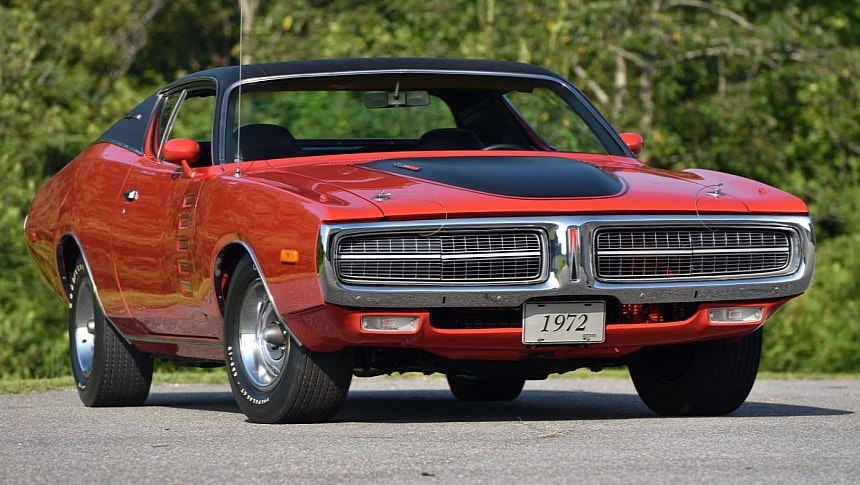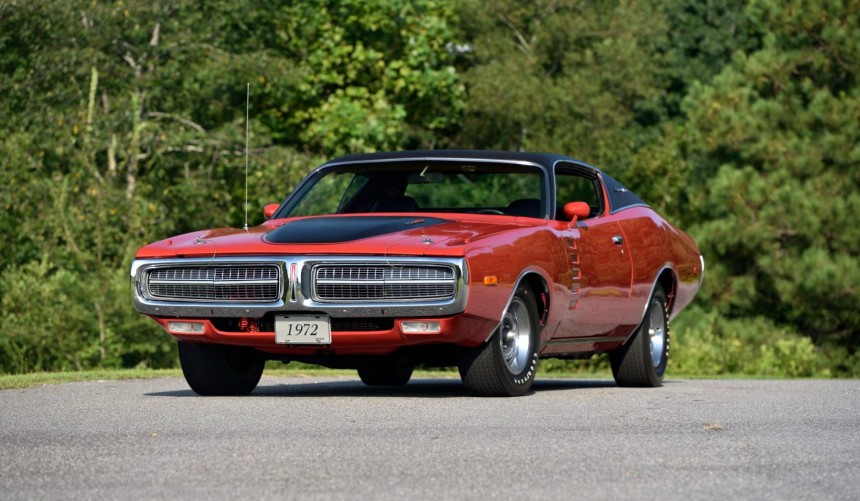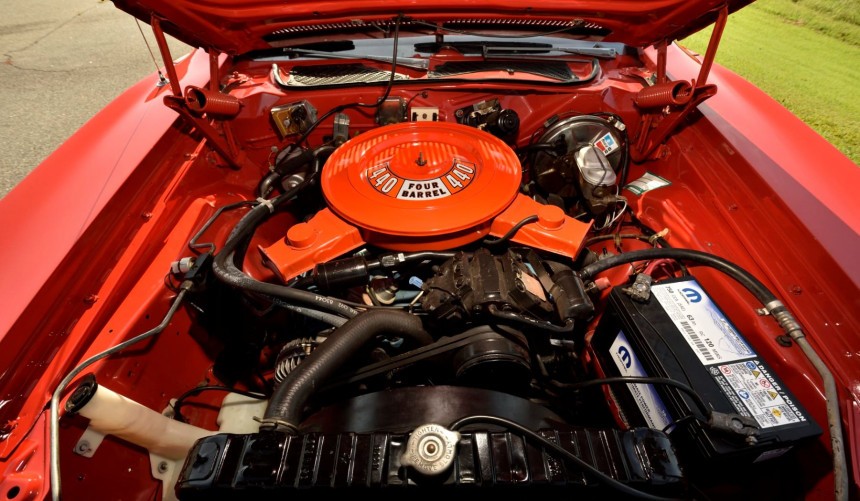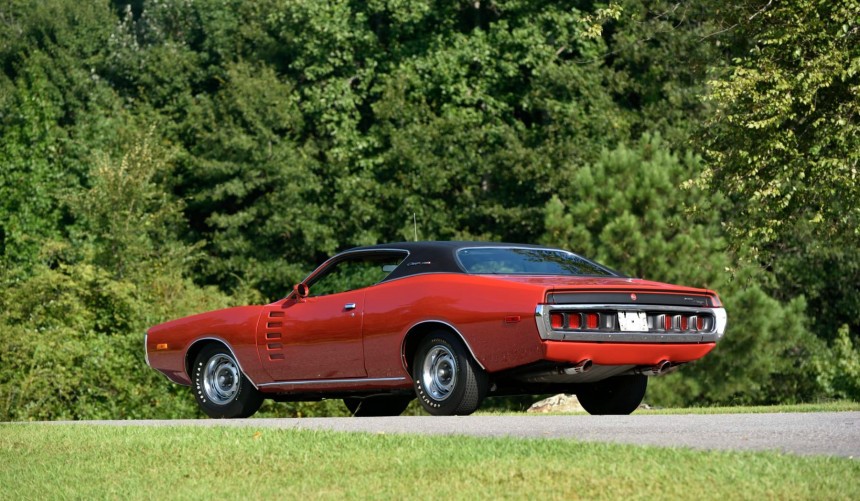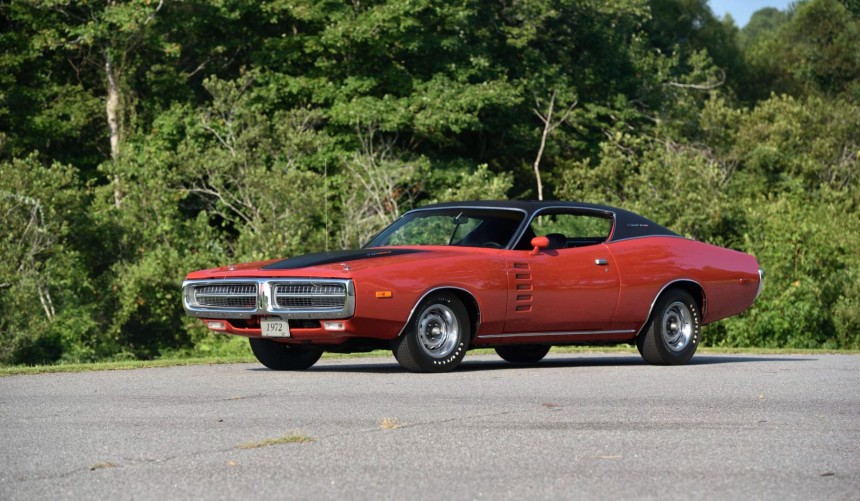As the curtain fell on all things muscle, Dodge had to rethink its performance lineup. For the Charger, that meant the Super Bee, 500, and R/T trims were gone, but thankfully, Dodge passed the torch to the new Rallye.
Introduced in the middle of the 1966 model year, the B-body Coronet-based Charger was Dodge's take on a sporty, fastback intermediate aimed at competing with the conceptually similar AMC Rambler Marlin launched in 1965.
Though it was slightly more expensive than its rival, the Charger's design was more appealing, and its engine lineup included more potent V8s, so it became very popular.
By 1968, the Charger was thoroughly redesigned, and it became Dodge's go-to weapon in the industry's fierce battle for muscle car supremacy.
Available in high-powered trims like the 500 and R/T, as well as the wild Daytona (in 1969) NASCAR homologation special, the second-generation became a timeless muscle car icon.
For the 1971 model year, Dodge redesigned the Charger once again, and although the performance trims returned, for 1972, rising insurance rates, new emission regulations, and less customer interest in muscle cars meant that the Chrysler division had to make some drastic changes.
Thus, the only performance-oriented Charger still available in the 1972 lineup was the all-new Rallye.
Unlike the flashy Super Bee and the iconic R/T, which were now a thing of the past, the Rallye was only available in two High Impact colors (Hemi Orange and Top Banana), while its unique decal package offered a blacked-out section on the hood and above the taillight cluster.
Additional Rallye exterior features were a recessed dark argent grille, louvered taillamps, a bulged hood, and the 1972-only, Rallye-exclusive faux door louvers with black graphics.
Customers could get the optional hidden headlights, which came with their own grille, a vinyl roof, and a sunroof, but none of these features were exclusive to the Rallye.
Under the hood, the Rallye could have any of the lineup's available V8s. That meant the standard engine was the two-barrel 318-ci (5.2-liter) mill rated 150 net horses. However, performance buffs still had three potent engines to choose from.
The first was the four-barrel version of the new 400-ci (6.6-liter) B-series big block, which made 225 hp (a less powerful two-barrel version was also available).
The second performance engine was the popular 340-ci (5.6-liter) small block that, although de-tuned, still made 240 hp thanks to its four-barrel carb and dual-exhaust system.
The third performance engine available was the venerable 440-ci (7.2-liter) Magnum, which, after the retirement of the iconic 426 HEMI, became Mopar's most powerful V8.
Also de-tuned to pass the stringent emission regulations, the Magnum still delivered a respectable 280 hp (again, these figures were the result of the net system).
All three performance engines came with the A-833 four-speed, Hurst pistol grip shifter-equipped manual, while the column- or console-shifted TorqueFlite automatic was optional.
Based on the same B-body chassis as its predecessors, the 1972 Charger didn't receive any new hardware, even with the Rallye package.
The suspension system came with a thicker anti-roll bar if any V8 above the 318 was selected, while the brakes came with drums on all four corners as standard or front power discs as a lineup-wide option.
For the rear end, the Dana 60 along, with lower gear ratios for the remaining diffs were discontinued.
The standard rears were the 7¼-inch when the Rallye was equipped with the 318 or the 8¾-inch version when any other V8 was selected. The good news was the return of the Sure Grip (limited-slip) option.
As you would expect, the drop in compression ratios had a negative impact on the Rallye's performance, even when equipped with one of the three potent V8s.
Still, with all the right options, the Rallye still ran the quarter mile in muscle-car-worthy fashion.
When powered by the 340, it ran the quarter-mile time in 15.8 seconds. The figure dropped by about 0.6 seconds when the Rallye had a 400 four-barrel under the hood, while a mid-14-second time could only be achieved when the 440 Magnum powered the car.
Though watered down in more ways than one, the Rallye was still a legitimate muscle car when equipped with the right engine. The few enthusiasts who were still willing to pay a higher insurance premium to own one recognized that, so Dodge managed to sell 4,351 Rallyes out of the total of approximately 75,500 Chargers that year.
The relative success of the package convinced Dodge to keep performance on the menu for two more tumultuous years. Then, in 1975, the Charger was redesigned and moved to the personal luxury car segment, which, sadly, killed its muscle car pedigree.
These days, surviving 1972 Rallyes are among the rarest yet cheapest Chargers from the golden age of muscle.
According to Hagerty's valuation tool, a 1972 Rallye in good condition has an average value of $16,100, while a concours-level survivor goes for an average of $31,700.
Of course, there are much more expensive exceptions, like the example pictured in this article. Equipped with a 440 Magnum and many rare options, the low-mileage, highly original, and flawlessly restored Rallye fetched $88,000 at the Mecum Kissimmee auction earlier this year.
For a virtual tour of a 440 Magnum-equipped survivor, we recommend watching the YouTube video below by Revenant Motors.
Though it was slightly more expensive than its rival, the Charger's design was more appealing, and its engine lineup included more potent V8s, so it became very popular.
By 1968, the Charger was thoroughly redesigned, and it became Dodge's go-to weapon in the industry's fierce battle for muscle car supremacy.
Available in high-powered trims like the 500 and R/T, as well as the wild Daytona (in 1969) NASCAR homologation special, the second-generation became a timeless muscle car icon.
For the 1971 model year, Dodge redesigned the Charger once again, and although the performance trims returned, for 1972, rising insurance rates, new emission regulations, and less customer interest in muscle cars meant that the Chrysler division had to make some drastic changes.
Thus, the only performance-oriented Charger still available in the 1972 lineup was the all-new Rallye.
Subdued styling
Additional Rallye exterior features were a recessed dark argent grille, louvered taillamps, a bulged hood, and the 1972-only, Rallye-exclusive faux door louvers with black graphics.
Customers could get the optional hidden headlights, which came with their own grille, a vinyl roof, and a sunroof, but none of these features were exclusive to the Rallye.
No more HEMI, but three potent engines were still available
The first was the four-barrel version of the new 400-ci (6.6-liter) B-series big block, which made 225 hp (a less powerful two-barrel version was also available).
The second performance engine was the popular 340-ci (5.6-liter) small block that, although de-tuned, still made 240 hp thanks to its four-barrel carb and dual-exhaust system.
The third performance engine available was the venerable 440-ci (7.2-liter) Magnum, which, after the retirement of the iconic 426 HEMI, became Mopar's most powerful V8.
Also de-tuned to pass the stringent emission regulations, the Magnum still delivered a respectable 280 hp (again, these figures were the result of the net system).
All three performance engines came with the A-833 four-speed, Hurst pistol grip shifter-equipped manual, while the column- or console-shifted TorqueFlite automatic was optional.
No new chassis hardware
The suspension system came with a thicker anti-roll bar if any V8 above the 318 was selected, while the brakes came with drums on all four corners as standard or front power discs as a lineup-wide option.
For the rear end, the Dana 60 along, with lower gear ratios for the remaining diffs were discontinued.
The standard rears were the 7¼-inch when the Rallye was equipped with the 318 or the 8¾-inch version when any other V8 was selected. The good news was the return of the Sure Grip (limited-slip) option.
The Rallye was not as powerful as its predecessors, but it still packed a punch
Still, with all the right options, the Rallye still ran the quarter mile in muscle-car-worthy fashion.
When powered by the 340, it ran the quarter-mile time in 15.8 seconds. The figure dropped by about 0.6 seconds when the Rallye had a 400 four-barrel under the hood, while a mid-14-second time could only be achieved when the 440 Magnum powered the car.
The 1972 Dodge Charger Rallye today
{fulllimg13}Though watered down in more ways than one, the Rallye was still a legitimate muscle car when equipped with the right engine. The few enthusiasts who were still willing to pay a higher insurance premium to own one recognized that, so Dodge managed to sell 4,351 Rallyes out of the total of approximately 75,500 Chargers that year.
The relative success of the package convinced Dodge to keep performance on the menu for two more tumultuous years. Then, in 1975, the Charger was redesigned and moved to the personal luxury car segment, which, sadly, killed its muscle car pedigree.
These days, surviving 1972 Rallyes are among the rarest yet cheapest Chargers from the golden age of muscle.
According to Hagerty's valuation tool, a 1972 Rallye in good condition has an average value of $16,100, while a concours-level survivor goes for an average of $31,700.
Of course, there are much more expensive exceptions, like the example pictured in this article. Equipped with a 440 Magnum and many rare options, the low-mileage, highly original, and flawlessly restored Rallye fetched $88,000 at the Mecum Kissimmee auction earlier this year.
For a virtual tour of a 440 Magnum-equipped survivor, we recommend watching the YouTube video below by Revenant Motors.
